Castiglion Fiorentino is a small town in Tuscany of Etruscan origin, where live nearly 13,000 souls, located on a hill between Cortona and Arezzo. It preserves a medieval center, the pretty central square Piazza del Municipio with its balcony, the ancient walls, and on the acropolis of the Cassero dating back to the Etruscan medieval fortifications such as the tower.
Historical aspects
The area of Castiglion was already occupied in prehistoric times and developed in the Etruscan era, from the 6th century BC, as a crossroads between the two cities of Arezzo and Cortona. The centre was located on the hill, near the present dungeon. The Etruscans settled more generally in the whole of the Val di Chiana, as in Brolio.
Under the Republic, the Romans exploited the fertility of these lands for their needs, but with the reign of Augustus, the flooding of the Tiber in Rome prompted the Romans to obstruct its tributaries, including the Clanis. This caused a stagnation of water that made the valley unhealthy.
Free commune in the 12th century, in the Middle Ages and up to the Renaissance, Castiglion was the scene of wars between its great neighbours such as Siena, Florence and Perugia.
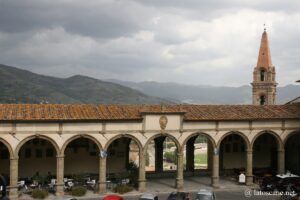
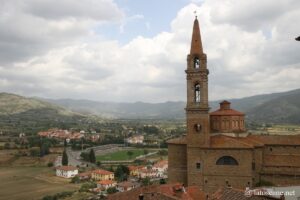
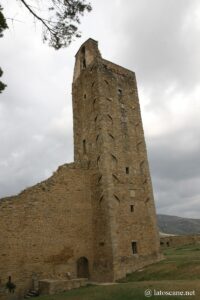
Sights to see in Castiglion Fiorentino
Walls and gates
The walls date back to the 13th century, enlarged in the 14th century to include the Cassero on the heights. They were later reworked. The Porta Fiorentina was rebuilt in the 19th century and is the old entrance to the historic centre on the north side. To its right are the remains of the Torre degli Assi. The section on the left is composed of the remains of other towers : the Porta S. Giuliano, the Porta Romana, etc.
Piazzale del Cassero
Large blocks of stone correspond here to the Etruscan wall enclosure of the IV sec. BC, and the Urbica gate is also from the IV century BC.
Near the Pretorio Palace, excavations have revealed a sacred area in service at the end of the V sec. BC. until the II sec. AC.
The Cassero was converted into a fortress in the fourteenth century, especially by Perugia, whose tower was probably rebuilt at that time of Etruscan origin, and the deep well dug. A convent was established there in the 16th century.
Piazza del Municipio
In Piazza del Municipio, the Palazzo Comunale dates back to the 14th century, built during the rule of Perugia. There is also the Loggia of Vasari.
Vasari Loggia
Opposite the Palazzo Comunale is a loggia from the 16th century created by Vasari in 1513, open with a view of the Val di Chio, from Valdichiana to Valtiberina.
Pretorio Palace and Museum
The Pretorio Palace was built in the middle of the 15th century on an older building to serve as a court and prison.
It houses the municipal library and on the ground floor is a Museum of Archaeology. It preserves artifacts found in the surrounding area, including the acropolis of Cassero.
Pinacoteca and Sant’Angelo church
The Pinacoteca Comunale (Municipal art gallery) is partly housed in the former Romanesque church of Sant’Angelo, dating from the 13th century and later remodeled. It preserves masterpieces of goldsmithing from the 13th to 14th centuries and paintings by great Tuscan masters such as Taddeo Gaddi, Bartolomeo della Gatta, del Ghirlandaio, Margarito d’Arezzo or Giorgio Vasari.
Museum of Sacred Art
The Museum of Sacred Art (Collegiate Church of Saints Michele and Giuliano) houses religious works from the 15th to 17th centuries, including the fresco Lamentation by Luca Signorelli, a Baptism of Christ by Della Robbia school.
Church and Cloister of Saint Francis
The Saint-Francis church, a mixture of Romanesque and Gothic architecture, was built by the Franciscan friars on top of an older church in the second half of the 13th century.
Behind its original sandstone facade the interior is simple with some frescoes, including a Virgin in glory on the counter-façade, by Salvi Castellucci, 17th century sculptures, 15th century frescoes. The cloister was built in the 17th century replacing an older 13th century cloister. The glasses have frescoes from the 17th century of the Life of Saint Francis.
Other sites
- The Municipal Theatre has a beautiful structure with three levels of boxes, and inside a 19th century decoration with gilded stucco and marble.
- Pieve di San Giuliano (15th) and its collegiate church (19th).
- Convent of Sant’Agostino (14th century).
- Chiesa della Madonna della Consolazione (completed 1607).
- Church of the Gesù (16th).
- Church of Sant’Angelo al Cassero (12th)
Montecchio Vesponi
Montecchio Vesponi is a small village located in the province of Arezzo, 3 km south of Castiglion. Its castle dominates a hill overlooking the Val di Chiana. Its appearance is severe, with its tower of 30 meters high. The walls have eight turrets, for a length of 263 meters, with a dungeon.
On the walls, we find traces of the houses of peasants who were leaning against it in the Middle Ages. Remnants of peasant huts also dot the surrounding olive groves.
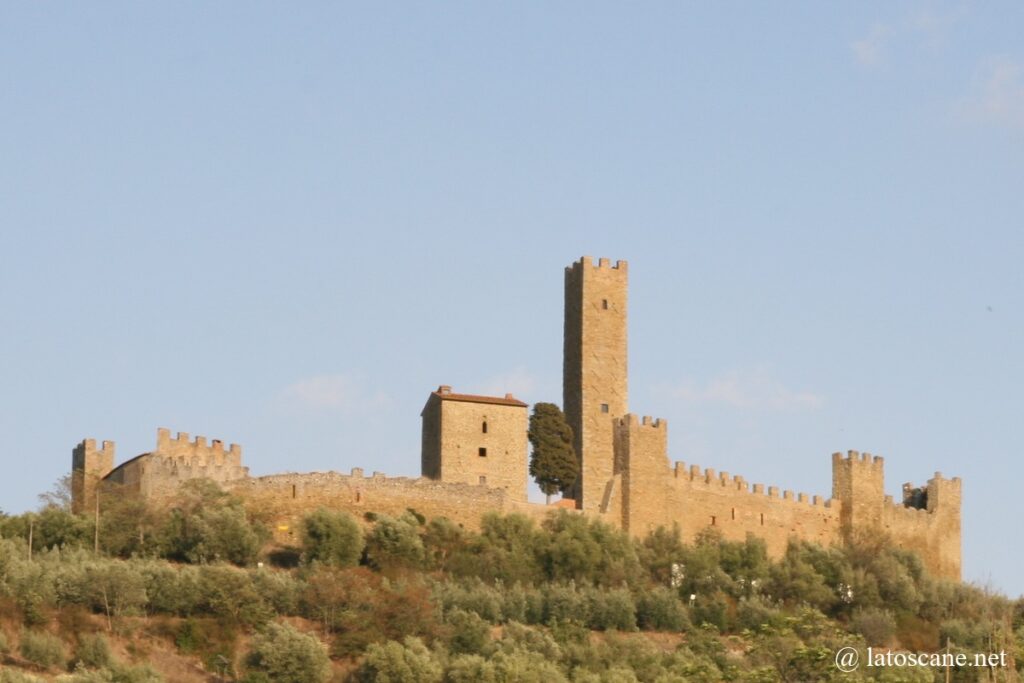
Where is Castiglion Fiorentino, map
If you see this after your page is loaded completely, leafletJS files are missing.
Links and sources
- General informations : en.wikipedia.org
- Tourist portals : www.experiencecastiglionfiorentino.it, lecapanne.com
- Montecchio Vesponi : en.wikipedia.org
Articles about Castiglion
- Montecchio Vesponi
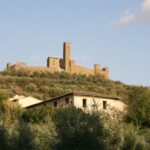 Montecchio Vesponi is a small village in the province of Arezzo. Its castle dominates a hill overlooking the Val di Chiana. Its appearance is severe, with its tower of 30 ...
Montecchio Vesponi is a small village in the province of Arezzo. Its castle dominates a hill overlooking the Val di Chiana. Its appearance is severe, with its tower of 30 ... - Hotels in Castiglion Fiorentino
 Book an accommodation in Castiglion Fiorentino or close to Montecchio in Tuscany, among dozens of structures including hotels, apartments or agritourisms
Book an accommodation in Castiglion Fiorentino or close to Montecchio in Tuscany, among dozens of structures including hotels, apartments or agritourisms
No Comments Yet